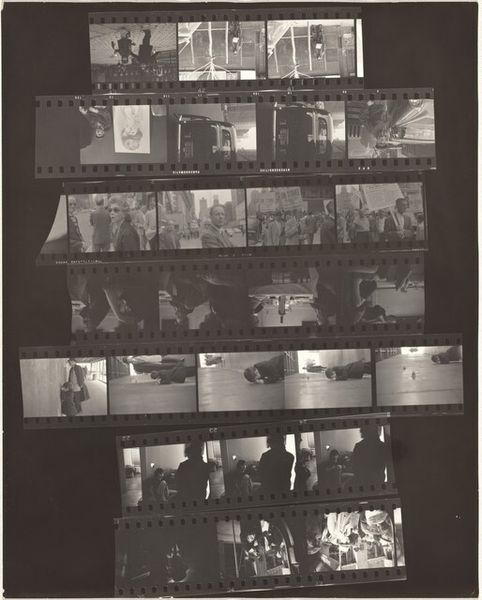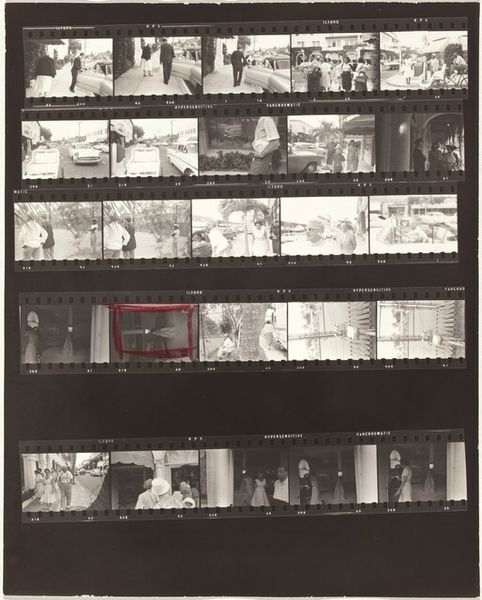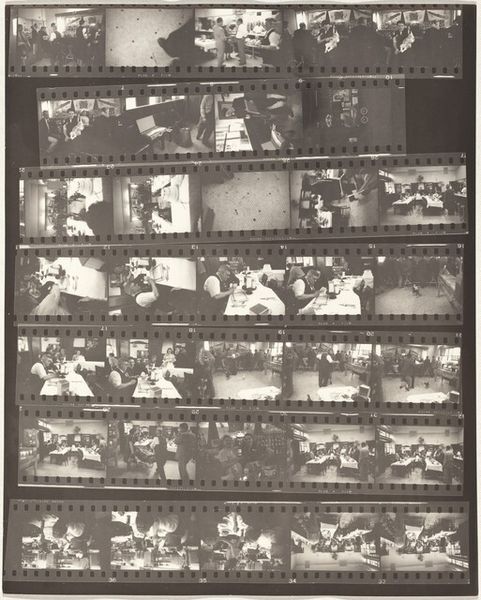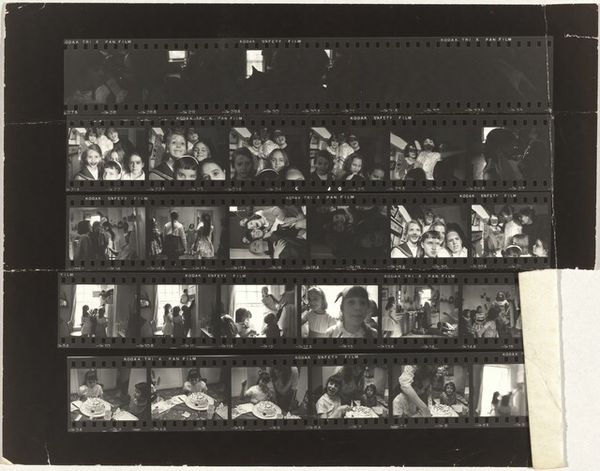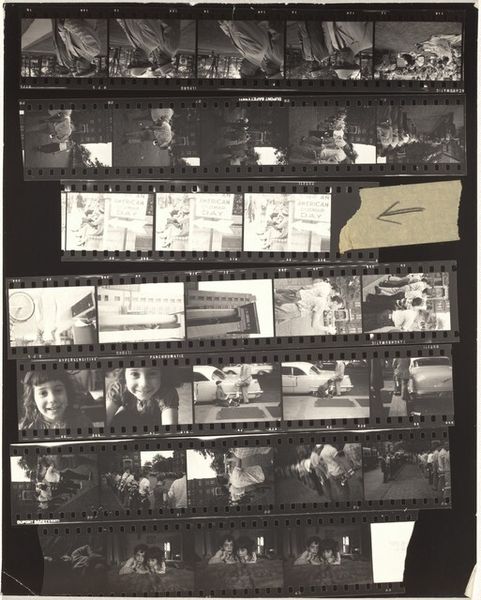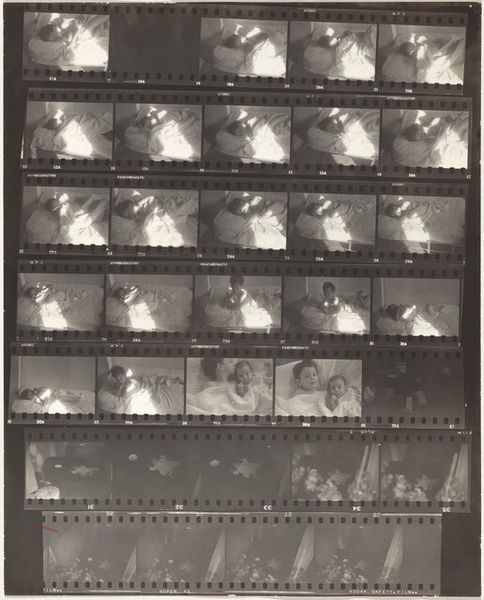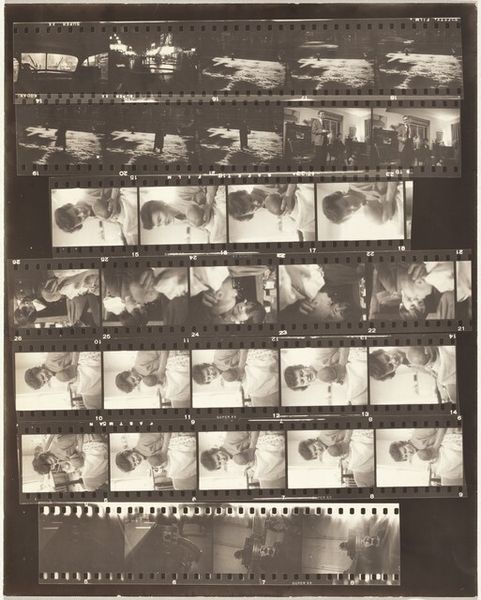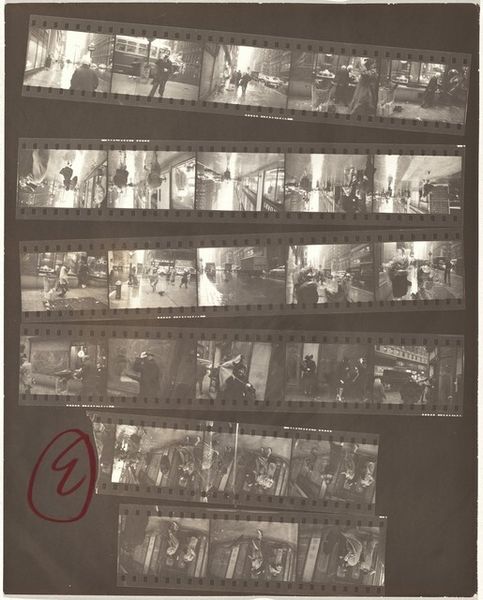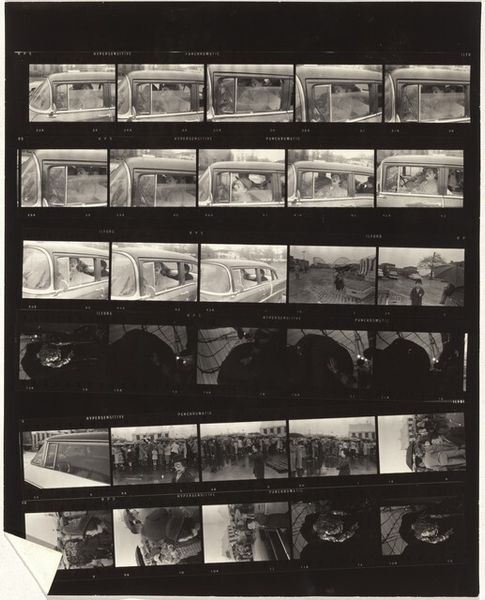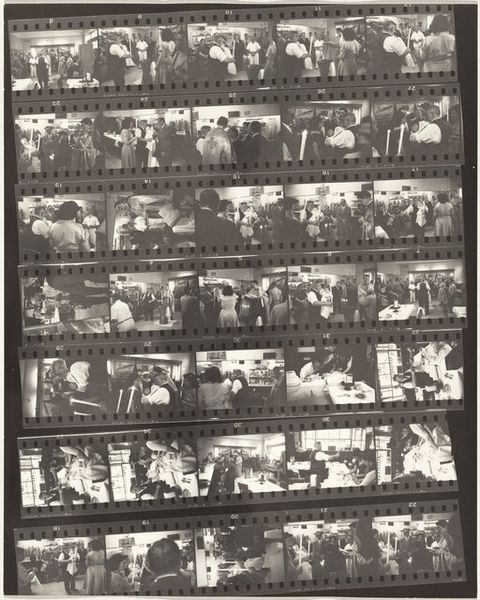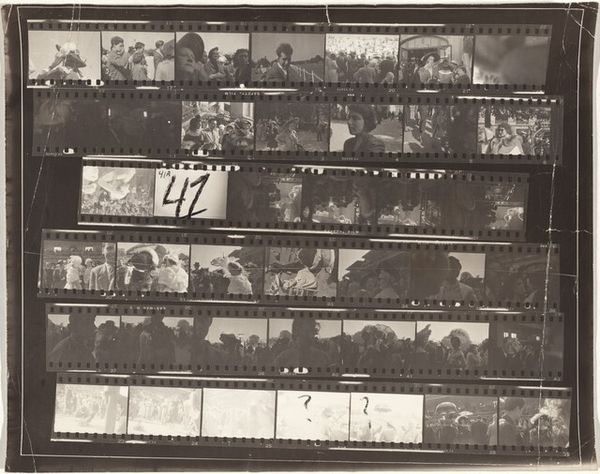
Dimensions: overall: 25.3 x 20.2 cm (9 15/16 x 7 15/16 in.)
Copyright: National Gallery of Art: CC0 1.0
Editor: This is "Guggenheim 149--Pablo and Andrea, New York City," a gelatin-silver print contact sheet from 1956 by Robert Frank. It’s a matrix of small, grainy images – glimpses of children, interiors, and what look like toys. There's a casual, almost haphazard feel, like peeking into someone's memories. What draws your eye in this piece? Curator: What I find compelling is how Frank uses this grid of images to speak about time, memory, and the seemingly mundane moments that shape our lives. Contact sheets aren’t typically presented as finished artworks; they are the artist's raw material. But by exhibiting it, Frank elevates these visual notes. Consider the repeating motifs—children, masks, the same interior glimpsed from various angles. Each photograph, a modern-day icon; what do you make of them presented together? Editor: That’s a great point. Seeing them all together does feel deliberate, a narrative stitched from fragments. It also highlights the photographer’s choices: the framing, the light, the fleeting expressions. I suppose I didn’t consider the mask as symbolic. Is he referencing something specific, like theatre, or ritual? Curator: It could be either, or both! Masks hide and reveal. Think about how photography itself functions. It presents a fragment of reality, edited and interpreted. Robert Frank seems aware that his visual symbols create continuities, while remaining emotionally subjective, reflecting perhaps anxieties about family or loss of identity, very timely concerns after World War II. Do you find any emotional through-line from top to bottom? Editor: Looking at it that way… the top is very playful, all those childhood fantasies and staged scenarios, versus the very last few frames of just one boy digging by himself outside, feeling alone. It definitely feels different. Curator: Exactly! This sheet invites us to question the symbols and decode their hidden meanings. In some ways, this body of images represents collective cultural experience, presented as if the artist is personally unearthing layers of time and meaning. Editor: It makes me appreciate how a simple contact sheet can be a powerful commentary on memory and culture. Curator: Indeed. Hopefully this reveals why photographs like these resonate so deeply. They're not just pictures; they're cultural mirrors, reflecting back at us who we are and where we've been.
Comments
No comments
Be the first to comment and join the conversation on the ultimate creative platform.
